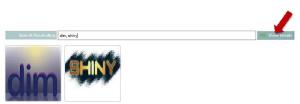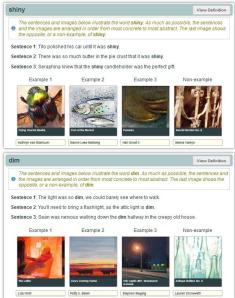One of the greatest features of these Vocabulary Lessons are their versatility. Consider the following uses:
- Infer word meaning. Using only the index page of over 200 alphabetized vocabulary terms (an ever-growing list), have learners guess at the meanings of words based on how they are illustrated.
- Illustrate new words. Use the concept of typography to have learners produce their own illustrated words.
- Create a definition. Depending on your learners, read to them or have them read on their own, the example sentences and look at the images associated with the vocabulary word. Have them create a definition for the word. Then, check their answers against the definition by clicking on the “View Definition” button. Here is an example for the word symmetrical.
- Teach word parts. Use the search feature on Vocabulary Lessons index page to find and sort word patterns. As soon as you start typing a word part, the words begin sorting. Here is an example of the results displayed for ight.
- Create word lists. Want to teach a specific set of words such as antonyms or synonyms? Create a group of words to be displayed together by typing them into the search bar, separated by a comma. First the words will sort. Once you click on the “View Vocab” button, the definitions, sentences, and associated artwork will display on one page.
Members of Literacyhead.com can use the “My Literacyhead” feature to create, name, and save vocabulary lessons. These customized lessons are created by the teacher using content from the site. Once saved, lessons can be accessed at a future date. For anyone who is not a Literacyhead member, you can still access content throughout the site. Just look for items marked with the “free” banner. There are at least 1-5 vocabulary words available for free at a given time.
Other free features that you may find useful include:
Writing Prompts Prompt student writing with sets of visual art grouped by themes. Stick with the theme, mix and match themes, or create one of your own.
Art Galleries These online galleries, grouped by featured artists, can also be used to prompt student writing. Or, encourage students to practice using newly acquired vocabulary terms by describing the images.
Websites:
CAPL (CulturallyAuthenticPictorialLexicon) – This collection of photographs, arranged by language and context, can be used for language learning.
Wordle– Create word clouds by typing text into the site. The most prominent words from the text are displayed larger and more frequently in the word cloud. Allow learners to explore and design their own.





